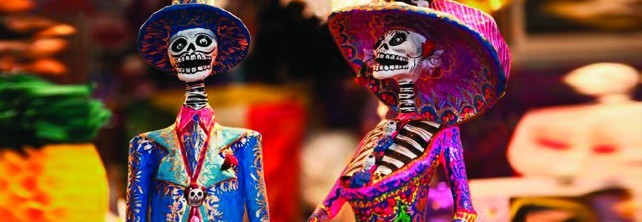Source: CONACULTA
Among the printmakers who were famous for their “calaveras” or satirical drawings were Constantino Escalante, Santiago Hernández, Manuel Manilla and José Guadalupe Posada, whose works emphasized the festive, carefree character of the Mexican people.
Posada’s art was diverse. Through his “calaveras,” he portrayed the essence of the grief and happiness of a society that experienced major social differences during the era of Porfirio Díaz. Currently, they are directly related to the Day of the Dead; however, they also represent the interpretation of the life of society at that time.
There were “calaveras” decked in their finery, drinking pulque, mounted on horseback, in high society parties or festivities in poor neighborhoods, as is the case of “La Catrina.”
Originally dubbed “The Garbancera Skull,” it was a metal engraving produced by José Guadalupe Posada to criticize those who were known precisely as “Garbanceros,” in other words, people with indigenous blood who pretended to be Europeans, denying their roots and culture.
Posada’s work undoubtedly influenced later artists, including Diego Rivera, who gave “La Catrina” the name by which she is known today. It was he who first portrayed her in her finery in his mural Dream of a Sunday Afternoon in Alameda Park.
The word “catrín” describes an elegant, well-dressed man, accompanied by a lady with the same characteristics. This style was a classic image of the aristocracy in the late 19th and 20th centuries. By dressing her in this way, Diego Rivera turned “La Calavera Garbancera” into “La Catrina.”
